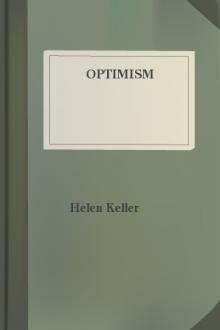Lippincott'S Magazine Of Popular Literature And Science, Volume 26 December, 1880. - Various None (e book reader android txt) 📗

- Author: Various None
Book online «Lippincott'S Magazine Of Popular Literature And Science, Volume 26 December, 1880. - Various None (e book reader android txt) 📗». Author Various None
Shade Over The Burner; Others Have A Larger Pipe Enclosing The Gas-Pipe
For Ventilation, The Tops Of The Two Pipes (Including The Burner) Being
Enclosed By A Globe Pierced With Holes For Fresh Air. There Is Said To
Result A Good Ventilation, With Economy Of Gas, An Increased Steadiness
Of The Flame And Power Of Light. A Better Arrangement Is A Third Pipe
Enclosing The Gas-Pipe And Enclosed In The Ventilating-Pipe, Opening To
The Air, Instead Of The Holes In The Globe, Which In This Case Should Be
Air-Tight. This Plan Is Said To Have Reached Its Perfection When The
Three Pipes Are Filled With Wire Gauze To Some Extent. This, Being
Heated By The Escape Of Hot Gases In The Ventilating-Pipe, Sends Both
The Air And The Gas To The Flame Already Highly Heated. The Result Is
Said To Be Admirable As Regards Ventilation, Steadiness And Power Of The
Light And Economy Of Gas.
"With These Lamps The Pressure Of The Gas-Current Is Of Great
Importance; And I Now Turn To That Subject. It Is A General Complaint In
Buildings Whose Rooms Are High That The Flow Of Gas On The Lower Floor
Is Deficient, While On The Upper Floors There Is A Greater Supply Than
Is Necessary. This Inconvenience Arises From The Upper Stories Being
Subjected To Less Atmospheric Pressure Than The Lower, Every Rise Of Ten
Feet Making A Difference In The Pressure Of About One-Tenth Of An Inch
Of Water; And, Consequently, A Column Of Gas Acquires That Amount Of
Pressure Additional. The Following Table, Recording An Experiment Of Mr.
Volume 26 Title 1 (Lippincott'S Magazine Of Popular Literature And Science) Pg 104Richards, Will Show The Result In Respect To Light:
Gas Issuing From The Burner At A Pressure Of--
1/10 Inch Of Water Gave The Light Of 12 Candles,
5/10 " " " " " " " 6 "
10/10 " " " " " " " 2 "
40/10 " " " " No Appreciable Light.
Suppose A Building Of Six Floors Is Supplied From The Gas-Mains At A
Pressure Of Six-Tenths, And That The Difference Of Altitude Between The
Highest And Lowest Light Is Equal To Fifty Feet: The Gas In The Highest
Or Sixth Floor Will Issue From The Burners At A Pressure Of
Eleven-Tenths; The Fifth Floor, At Ten-Tenths; And So On. In Order To
Secure An Entirely Equable Flow And Economical Light A Regulator Is
Necessary On Each Floor Above The First. The Gas Companies Are
Frequently Obliged To Supply Mills At A Much Greater Pressure Than Is
Stated Above As Necessary, In Order That The Ground Floors May Have
Sufficient Light."
"How About Incorrect Meters?" Asked The Traveller.
"Little Need Be Said Of Them, As They Fall Within The Domain Of The
Companies And The Public Inspector Of Gas. Under Favorable Conditions
Gas-Meters Will Remain In Order For Ten Years Or More; And When They
Become Defective They As Often Favor The Consumer, Probably, As They Do
The Gas Company. Their Defects Do Not Often Occasion Inconvenience; And
When They Once Get Out Of Order They Run So Wild That Their Condition Is
Soon Detected, When The Errors In Previous Bills Should Be Corrected By
Estimate Of Other Seasons."
"You Haven'T Mentioned The Apparatus (Carburetters) For Increasing The
Richness Of The Gas, Which Can Be Applied By The Consumer Upon His Own
Premises," Said The Old Gentleman.
"There Is Little Need. The Burners Should Be Adjusted To The Quality Of
Gas Furnished. If There Were Any Real Gain In This Method Of Enrichment,
The Gas Companies Are The Parties Who Could Make The Most Of It: Indeed,
Many Of Them Do To Such An Extent As Can Be Made Profitable. But
Whenever The Temperature Of The Atmosphere Falls, The Matter Added To
The Gas Is Deposited In The Pipes, Sometimes Choking Them Entirely At
The Angles. No: Arrange Your Burners And Regulators To Suit The Gas That
Is Furnished, Demand Of The Company That It Fulfil The Law And The
Contract In Regard To The Quality Of The Gas, And Give All Gas-Improving
Machines The Go-By.[3]
"Light Having, Perhaps, Been Sufficiently Considered For The Present
Needs, We Have Now To Note The Effects Of The Combustion Of Gas Upon The
Atmosphere, And Through This Upon The Furnishing Of Rooms And The Health
Of The Persons Living Therein," Said The Chemist, Again Taking Up His
Manuscript. "The Usual Products From The Combustion Of Common
Illuminating Gas Are Carbonic Acid, Sulphuric Acid, Ammonia And
Water-Vapor. Every Burner Consuming Five Cubic Feet Of Gas Per Hour
Spoils As Much Air As Two Full-Grown Men: It Is Therefore Evident That
The Air Of A Room Thus Lighted Would Soon Become Vitiated If An Ample
Supply Of Fresh Air Were Not Frequently Admitted.
"Remember," Said He, Looking Up From The Paper, "That Nearly The Same
Effects Proceed From The Combustion Of Candles And Lamps Of Every Kind
Volume 26 Title 1 (Lippincott'S Magazine Of Popular Literature And Science) Pg 105When A Sufficient Number Of These Are Burned To Give An Equal Amount Of
Light. Carbonic Acid Is Easily Got Rid Of, For The Rooms Where Gas Is
Burned Usually Have Sufficient Ventilation Near The Floor By Means Of A
Register, Or Even The Slight Apertures Under The Doors--Together With
Their Frequent Opening--To Carry Off The Small Quantity Emitted By One
Or Two Burners. But There Are Other Gases Which Must Have Vent At The
Upper Part Of The Room, While Fresh Air Should Be Admitted To Supply The
Place Of That Which Is Chemically Changed."
Returning To His Manuscript, He Continued: "The Burners Which Give The
Least Light, Burning Instead With A Low, Blue Flame, Form The Most
Carbonic Acid And Free The Most Nitrogen. Such Are All The Burners For
Heat Rather Than Light. But The Formation Of Sulphuric Acid Gas May Be
The Same In each. In The Yellow Flame The Carbon Particles Escape To
Darken The Light Colors Of The Room, Not Being Heated Sufficiently To
Combine With The Oxygen. This Product Of The Combustion Of Gas (Free
Carbon) Might Be Regarded As Rather Wholesome Than Otherwise (As Its
Nature Is That Of An Absorbent) Were It Not The Worst Kind Of Dust To
Breathe--In Fact, Clogging The Lungs To Suffocation. In Vapor Gas--Made
At Low Heat--The Carbon Is In a Large Degree Only Mechanically Mixed
With The Hydrogen, And Is Liable, Especially In cold Weather, To Be
Deposited In The Pipes. This Leaves Only A Very Poor, Thin Gas, Mainly
Hydrogen, Which Burns With A Pale Blue Flame, As Seen In cold Spells In
Winter. High Heats And Short Charges In The Retorts Of The Manufactory
Give A Purer Gas And A Larger Production. Gas Made At High Heat Will
Reach The Consumer In any Weather Very Nearly As Rich As When It Leaves
The Gas-Holder; For, Thus Made, The Hydrogen And Carbon Are Chemically
Combined, Instead Of The Hydrogen Merely Bearing A Quantity Of
Carbon-Vapor Mechanically Mixed And Liable To Deposit With Every
Reduction Of Temperature. To Relieve The Atmosphere Of The Gases And
Vapors Proceeding From Combustion Is, Of Course, The Purpose Of
Ventilation. The Sulphuric Acid Gas And Ammonia Will Be Largely In
Combination With The Water-Vapor, Which Also Proceeds From Combustion,
So That All Will Be Got Rid Of Together. The Vaporization Of Libraries
To Counteract The Excessive Dryness (Or Drying, Rather) Which Causes
Leather Bindings To Shrink And To Break At The Joints, Would Be Of
Doubtful Utility, Since It Might Only Serve To Carry Into The Porous
Leather Still More Of The Gases Just Mentioned. The Action Of Both
Sulphuric Acid And Ammonia Is, Undoubtedly, To Destroy The Fibre Of
Leather, So That It Crumbles To Meal Or Falls Apart In Flakes.
"In A Very Interesting Paper Read By Professor William R. Nichols Of The
Massachusetts Institute Of Technology Before The American Association Of
Science At Its Saratoga Meeting In 1879, The Results Of Many Analyses Of
Leather Bindings Were Given, Showing The Presence Of The Above-Named
Substances In Old Bindings In Many Times Greater Quantity Than In New.
Still, Their Presence Did Not Prove Them To Be The Cause Of The Decay;
And Professor Nichols Proposes To Ascertain The Fact By Experiments
Requiring Some Years For Demonstration.
"In The Hope Of Deciding The Question With Reasonable Certainty At Once,
I Have Made Careful Examinations Of The Books In The Three Largest
Libraries Of Boston And Cambridge, Each Differing From The Others In age
And Atmosphere. The Bindings Of The Volumes Examined Bore Their Own
Record In dates And Ownership, By Which The Conditions Of Their
Atmosphere In Respect To Gas And (Approximately) To Heat Were Made
Known For Periods Varying From Current Time To Over Two Hundred Years.
In The Public Library The Combined Influences Of Gas, Heat And Effluvium
Volume 26 Title 1 (Lippincott'S Magazine Of Popular Literature And Science) Pg 106Have Wrought Upon The Leather Until Many Covers Were Ready To Drop To
Pieces At A Touch. The Binding Showed No More Shrinkage Than In The
Other Libraries, But In Proportion To The Time The Books Had Been Upon
The Shelves The Decay Of The Leather Was About The Same As In The
Athenaeum. I Am Informed That Many Of The Most Decayed Have From Time To
Time Been Rebound, So That A Full Comparison Cannot Be Made Between This
And The Others. In The Athenaeum Less Gas Has Been Used, And There Is
Very Little Effluvium, But The Mealy Texture Of The Leather Is General
Among The Older Tenants Of The Shelves. Numbers Of Volumes In The
Galleries Were Losing Their Backs, Which Were More Or Less Broken Off At
The Joints From The Shrinkage And Brittleness Of The Leather. The Plan
Has Been Proposed Of Introducing The Vapor Of Water To Counteract The
Effects Of Dryness Upon The Bindings. In This Library The Atmosphere Has
The Usual Humidity Of That Out Of Doors, Being Warmed By Bringing The
Outer Air In Over Pipes Conveying Hot Water, While The Other Libraries
Have The Higher Heat Of Steam-Pipes. If, Therefore, Its Atmosphere
Differs From That Of The Other Libraries In Respect To Moisture, The
Variation Is In The Direction Of Greater Humidity, Without Any
Corresponding Effect On The Preservation Of Bindings. In Fact, Proper
Ventilation And Low Shelves Seem To Be The True Remedies For These
Evils, Or, Rather, The Best Means Of Amelioration, Since There Is No
Complete Antidote To The Decay Common To All Material Things. The Last
Condition Involves The Disuse Of





Comments (0)